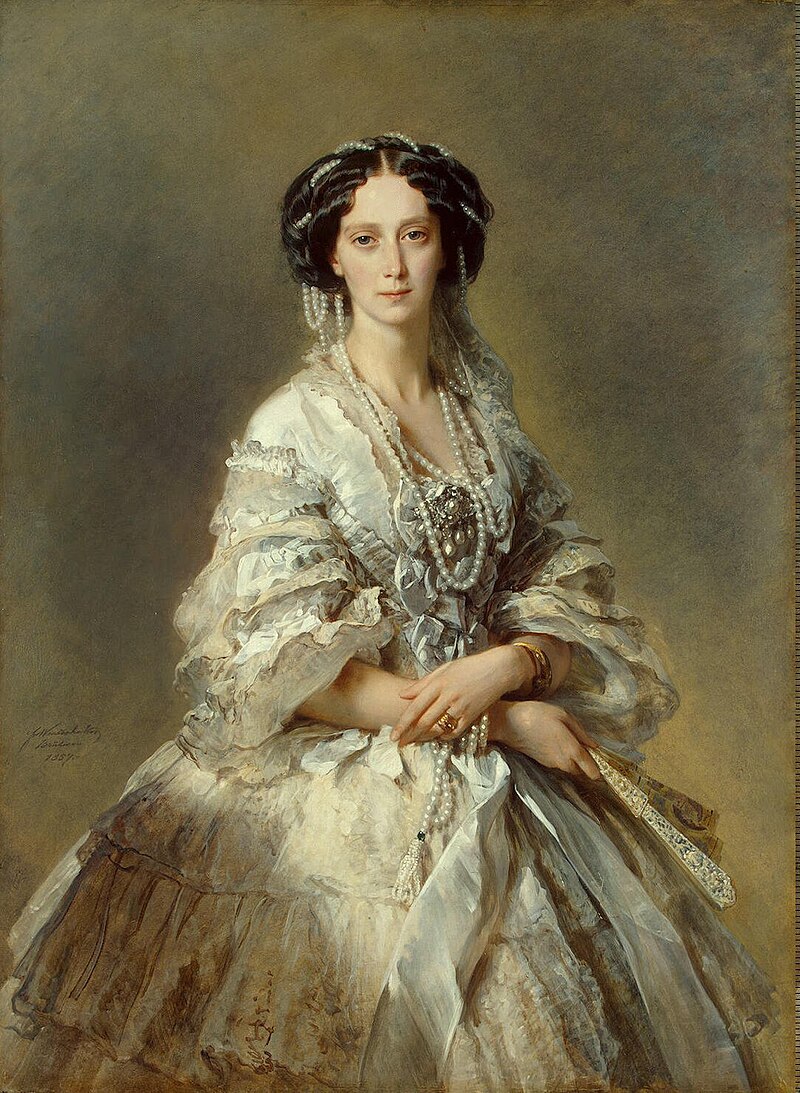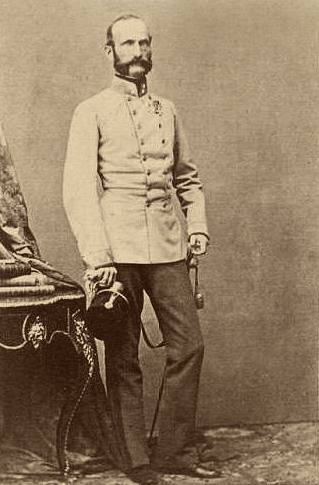by Susan Flantzer © Unofficial Royalty 2019

Credit – By Johann Heinrich Tischbein, CC BY-SA 4.0, https://commons.wikimedia.org/w/index.php?curid=74554565
On March 5, 1723, Princess Mary of Great Britain was born at Leicester House, Leicester Square in London, England. She was the seventh of the eight children and the fourth of the five daughters of King George II of Great Britain and Caroline of Ansbach, then the Prince and Princess of Wales. At the time of her birth, her grandfather King George I sat upon the throne of Great Britain. When Mary was four-years-old, her grandfather died and her father succeeded him. The next year the family moved to St. James’ Palace in London.
Mary had six older siblings and one younger sibling:
- Frederick, Prince of Wales (1707 – 1751), married Princess Augusta of Saxe-Gotha, had issue, including King George III
- Anne, Princess Royal (1709 – 1759), married Willem IV, Prince of Orange, had issue
- Princess Amelia (1711 – 1786), unmarried
- Princess Caroline (1713 – 1757), unmarried
- Prince George William (1717 – 1718), died in infancy
- Prince William, Duke of Cumberland (1721 – 1765), unmarried
- Princess Louise (1724 -1751), married Frederik V, King of Denmark and Norway

Mary’s husband Friedrich II, Landgrave of Hesse-Kassel; Credit – Wikipedia
In 1740, when Mary was 17 years old, a marriage was arranged for her with 20-year-old Friedrich II, the future Landgrave of Hesse-Kassel. Friedrich was the son of Wilhelm VIII, Landgrave of Hesse-Kassel and Dorothea Wilhelmine of Saxe-Zeitz. As Landgrave of Hesse-Kassel, Friedrich became famous during the American Revolution as a supplier of thousands of Hessian soldiers who fought on behalf of the British. A proxy marriage, with Mary’s brother William standing in for the groom, was held on May 19, 1740, in the Chapel Royal of St. James’ Palace. Mary left England In June and married Friedrich in person on June 28, 1740.
Mary and Friedrich had four sons:
- Prince Wilhelm of Hesse-Kassel (1741 – 1742), died in infancy
- Wilhelm I, Prince-Elector of Hesse (1743 – 1821), married his first cousin Wilhelmina Caroline of Denmark and Norway, daughter of his maternal aunt Louisa of Great Britain and King Friedrich V of Denmark, had two sons and two daughters
- Prince Karl of Hesse-Kassel (1744 – 1836), married his first cousin Louise of Denmark and Norway, daughter of his maternal aunt Louisa of Great Britain and King Friedrich V of Denmark, had three sons and three daughters including Marie who married King Frederik VI of Denmark
- Prince Friedrich of Hesse-Kassel (1747 – 1837), married Caroline of Nassau-Usingen, had five sons and three daughters including Augusta who married Prince Adolphus, Duke of Cambridge, son of King George III of the United Kingdom
Mary and her husband Friedrich are ancestors of the current British royal family through their fourth son Prince Friedrich. Prince Friedrich’s daughter Augusta was the grandmother of Princess Victoria Mary of Teck, better known as Queen Mary, the wife of King George V of the United Kingdom. Through their third son Prince Karl, Mary and her husband Friedrich are great-grandparents of King Christian IX of Denmark, as are Mary’s younger sister Louisa and her husband King Frederik V of Denmark. Through this line, Mary and Friedrich (along with her sister Louisa and Frederik V of Denmark) are ancestors of six of the ten current European royal families: Belgium, Denmark, Luxembourg, Norway, Spain, and the United Kingdom.
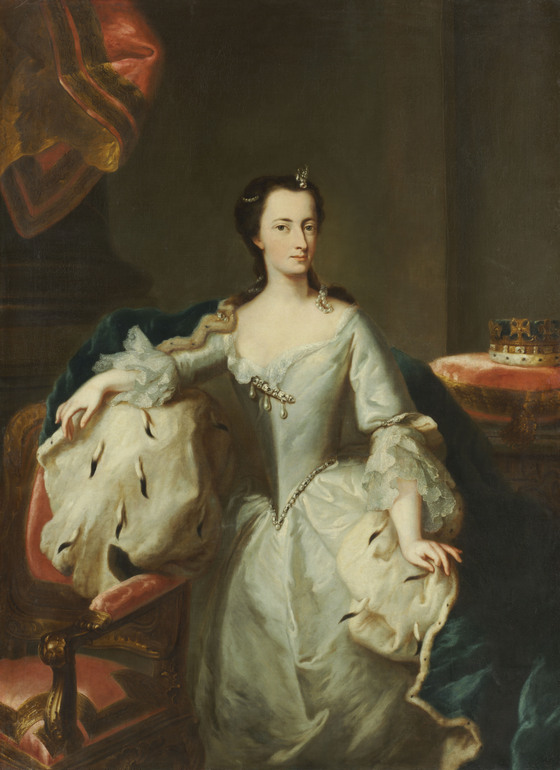
Mary in 1762; Credit – Wikipedia
Mary’s marriage was not a happy one and Friedrich was cruel and abusive. After the birth of their fourth son, Friedrich left Mary and their sons. Eventually, Friedrich sent her a letter saying that he had been in love with a Catholic woman who he had wanted to marry. However, she would not agree to marry Friedrich unless he converted to Catholicism which he refused to do, fearing the reaction of his family and future subjects. Shortly before the birth of his fourth son, Friedrich received word that his former love was dying and he went to see her. She asked him to convert to Catholicism so their souls could be reunited in heaven and Friedrich agreed to do so. In February 1749, Friedrich visited the Archbishop-Elector of Cologne, Clemens August of Bavaria, who received him into the Roman Catholic Church. Furious, Mary’s father King George II ordered his daughter back to England but she refused, saying that it was her duty to remain in the place that God had placed her and that she would ensure her sons would be brought up Protestant.
By 1754, it became obvious to Friedrich’s father Wilhelm VIII, Landgrave of Hesse-Kassel, that the marriage of his son and Mary was irretrievably broken and he took in his daughter-in-law and grandchildren to live with him. In 1755, Mary and Friedrich officially separated but Mary refused a divorce in order to deprive her husband of the opportunity to remarry. Friedrich’s father ordered him to leave the Protestant religion untouched in Hesse-Kassel and gave his eldest grandson the County of Hanau-Münzenberg, under the regency of Mary. Friedrich never saw his wife again and did not see his children until 1782.
In 1756, Mary went to Denmark to take care of the children of her younger sister Louisa who had died a few years earlier. Mary’s sons grew up in the Danish royal court and two of them married Danish princesses. In 1760, Wilhelm VIII, Landgrave of Hesse-Kassel died and his son and Mary’s husband became Landgrave of Hesse-Kassel. As there was no divorce, Mary was then Landgravine of Hesse-Kassel.

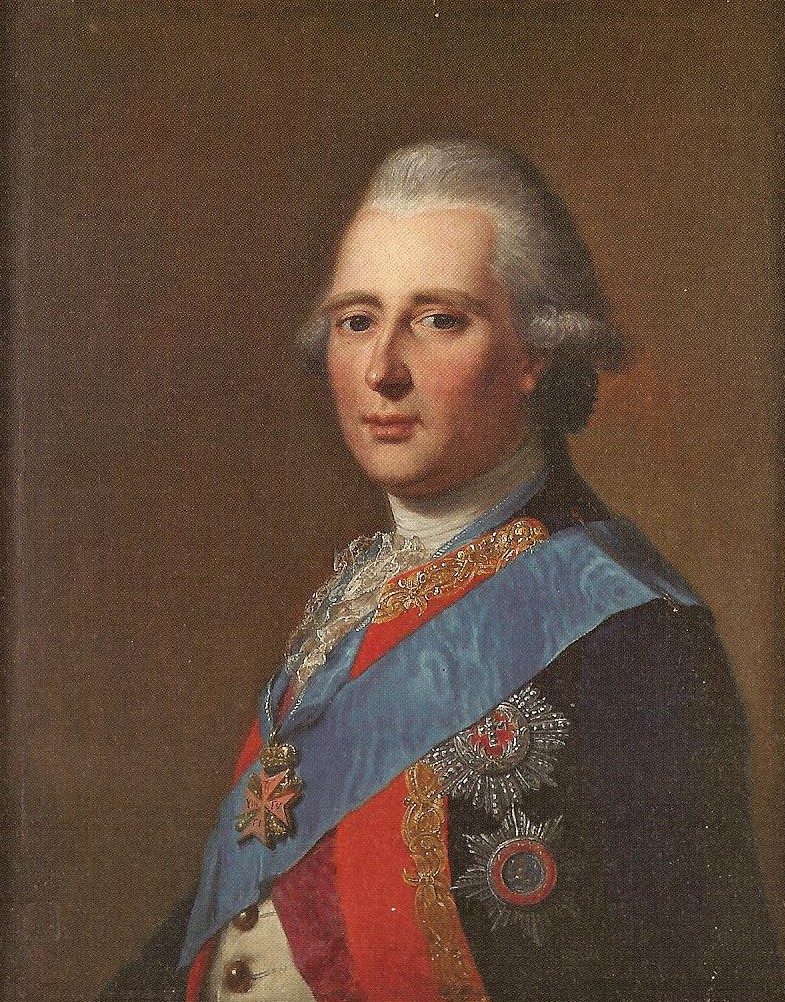

Mary’s sons: Wilhelm, Karl, and Friedrich; Credit – Wikipedia
In 1785, Mary’s oldest surviving son Wilhelm returned to Hesse-Kassel when his father died to succeed him as Wilhelm IX, Landgrave of Hesse-Kassel. He later became Wilhelm I, Prince-Elector of Hesse. Karl became a Field Marshal in the Danish Army and was royal governor of the Danish duchies of Schleswig and Holstein from 1769 to 1836. Friedrich also served in the Danish Army. In 1781, he bought Rumpenheim Castle (link in German) from his brother Karl and it became his family’s seat. Mary had spent her last years living there.
Mary died on January 14, 1772, in Hanau, Landgraviate of Hesse-Kassel, now in Hesse, Germany, at the age of 48. She was buried at the Marienkirche (link in German) in Hanau. Originally a Roman Catholic church built in the 1300s dedicated to Mary Magdalene, it was renamed the High German Reformed Church after the Reformation. In 1818, Mary’s son Wilhelm, now Prince-Elector of Hesse, decreed that the church should be renamed Marienkirche, St. Mary’s Church, in honor of his mother.

Tomb of Mary of Great Britain, Landgravine of Hesse-Kassel; Credit – Wikipedia
This article is the intellectual property of Unofficial Royalty and is NOT TO BE COPIED, EDITED, OR POSTED IN ANY FORM ON ANOTHER WEBSITE under any circumstances. It is permissible to use a link that directs to Unofficial Royalty.
Works Cited
- En.wikipedia.org. (2019). Frederick II, Landgrave of Hesse-Kassel. [online] Available at: https://en.wikipedia.org/wiki/Frederick_II,_Landgrave_of_Hesse-Kassel [Accessed 17 Jul. 2019].
- En.wikipedia.org. (2019). Princess Mary of Great Britain. [online] Available at: https://en.wikipedia.org/wiki/Princess_Mary_of_Great_Britain [Accessed 17 Jul. 2019].
- Van der Kiste, J. (2013). King George II and Queen Caroline. New York: The History Press.
- Van Der Kiste, John. The Georgian Princesses. Phoenix Mill: Sutton Publishing, 2000. Print.
- Williamson, David. Brewer’s British Royalty. London: Cassell, 1996. Print. London: Cassell, 1996. Print.


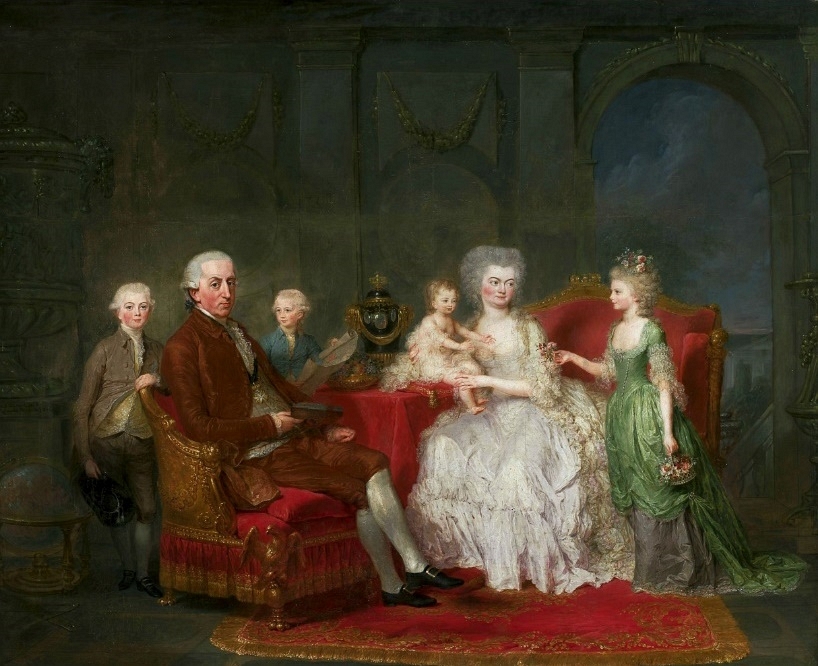






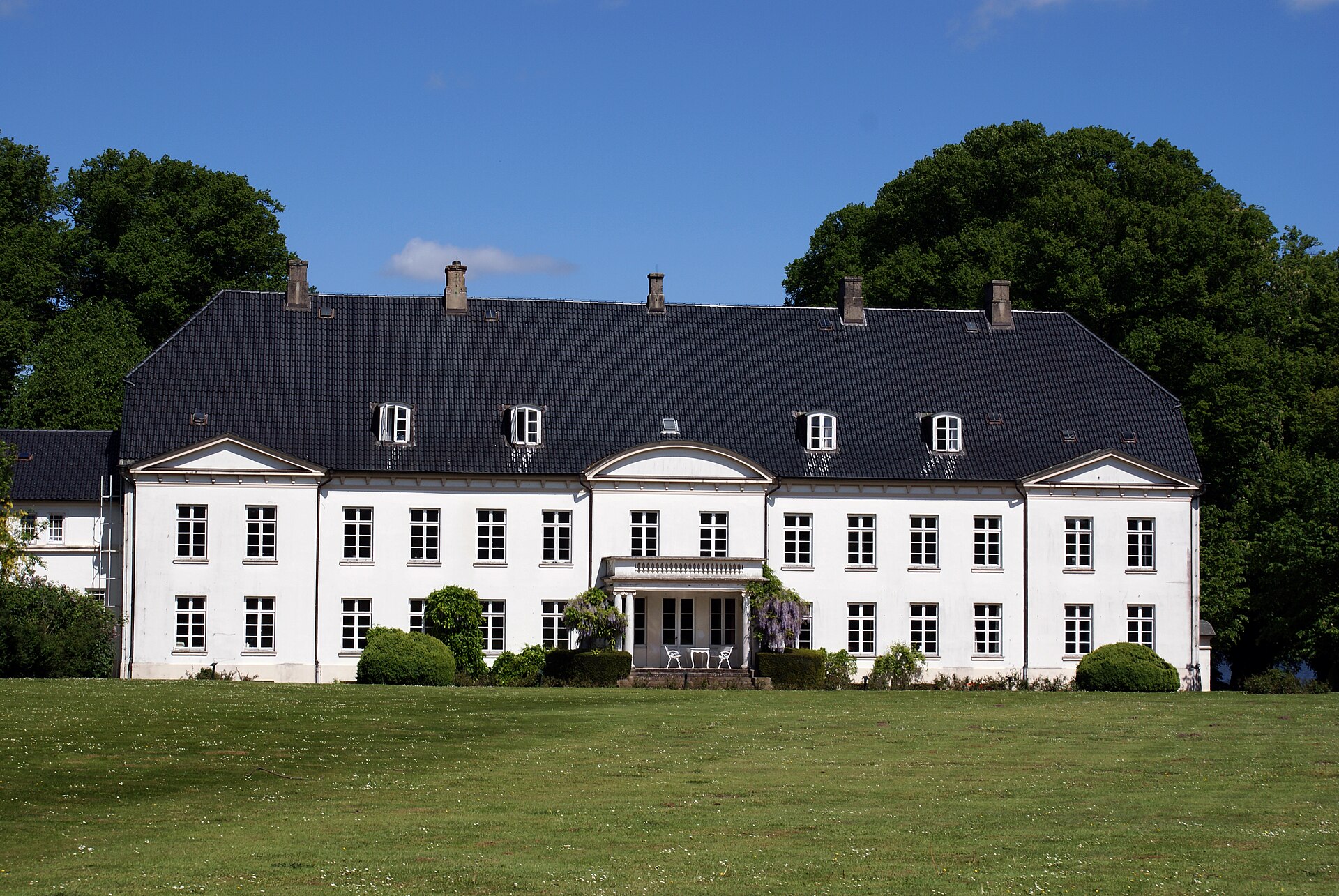










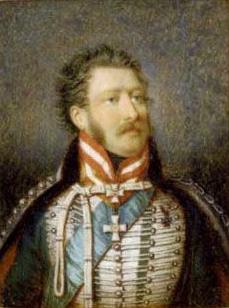


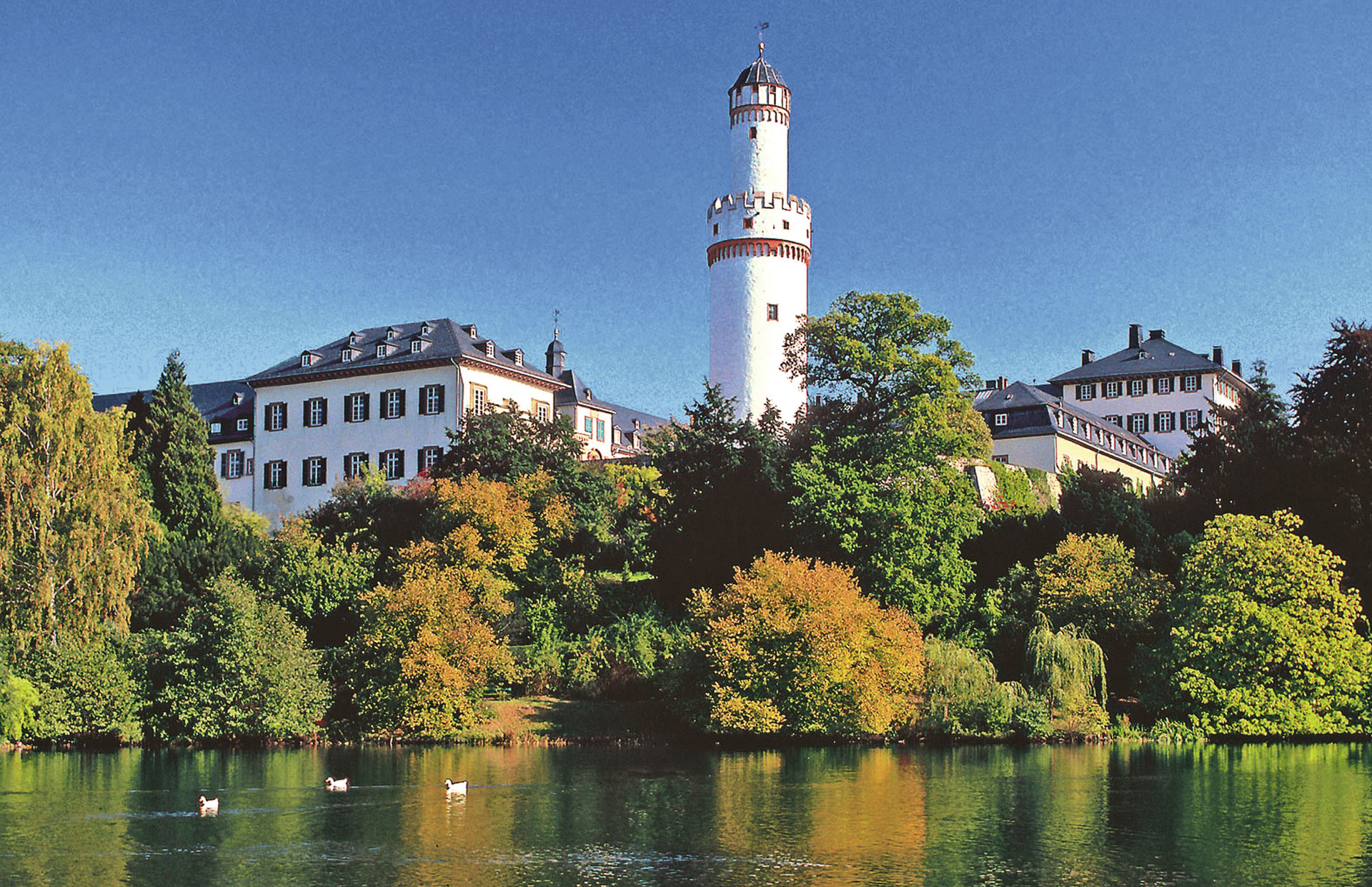



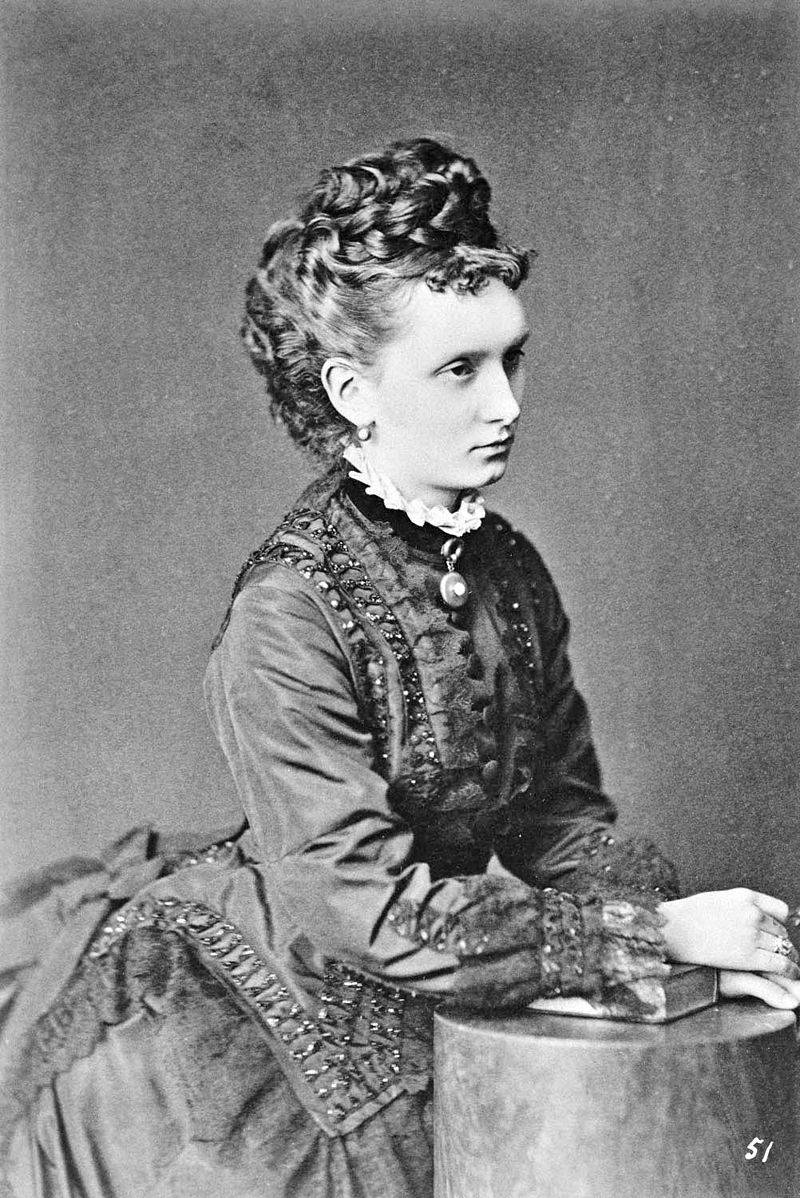 Princess Marie of Battenberg, Princess of Erbach-Schönberg
Princess Marie of Battenberg, Princess of Erbach-Schönberg


